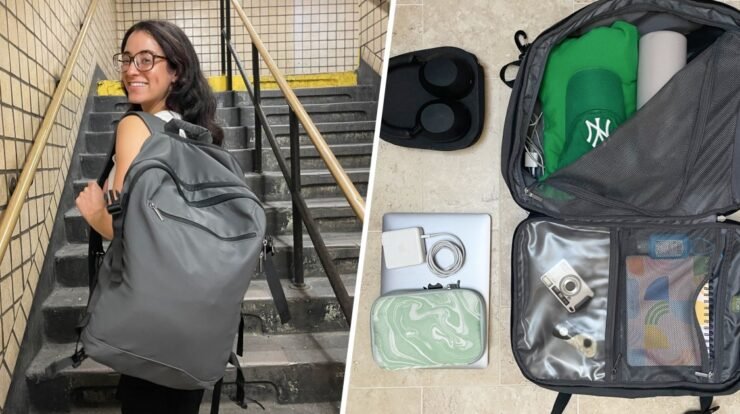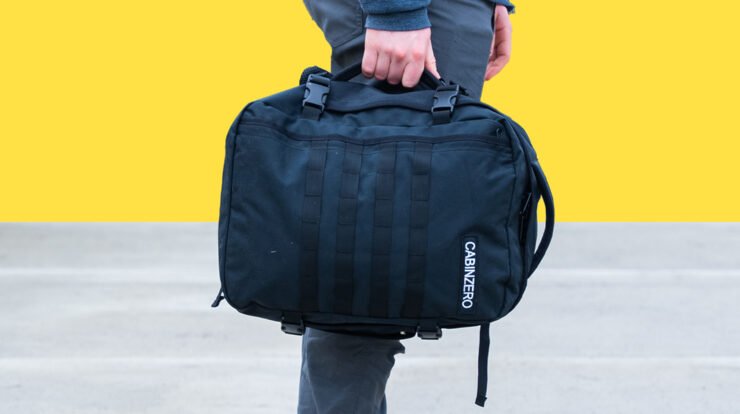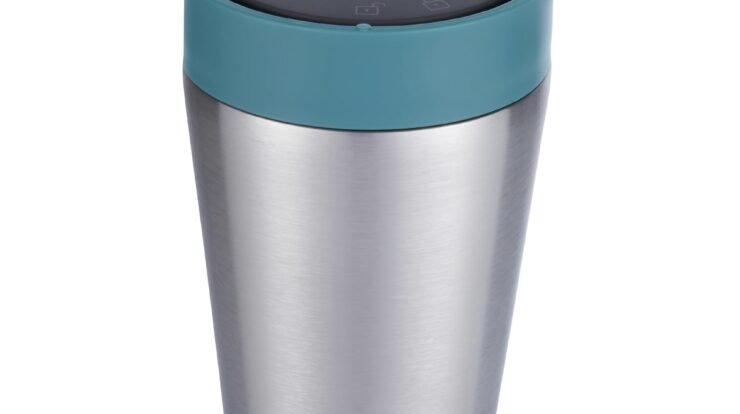Traveling light is an art form, one that requires strategy, discipline, and the right tools. For years, I’ve tested every packing hack under the sun—packing cubes, rolling techniques, you name it. But when it comes to squeezing every last inch out of a suitcase, few tools have impressed me as much as Ziploc Travel Space Bags (the no-vacuum variety). These unassuming plastic bags promise to compress your clothes, protect your belongings, and make your luggage feel like it’s working magic. But do they live up to the hype? As someone who’s spent years reviewing travel gear and organizing chaotic suitcases, I’m here to give you the full scoop on Ziploc Travel Space Bags, no vacuum required, with a deep dive into their features, performance, and real-world utility.
What Are Ziploc Travel Space Bags (No Vacuum)?
Ziploc Travel Space Bags are a game-changer for travelers looking to maximize luggage space without lugging around extra equipment like a vacuum pump. Unlike traditional vacuum storage bags that require a vacuum cleaner or hand pump to suck out the air, these bags rely on a simple roll-and-press method. You pack your clothes, seal the bag with the signature Ziploc slider, and roll it to push out excess air through a one-way valve at the bottom. The result? A flattened, compact bundle that takes up significantly less space in your suitcase.
The brand claims these bags can reduce the volume of your clothes by up to 75%, making them a go-to for carry-on travelers, overpackers, and anyone trying to avoid checked baggage fees. They’re marketed as airtight, waterproof, and reusable, which sounds like a dream for anyone who’s ever wrestled with an overstuffed suitcase. But as with any travel hack, the real question is whether they deliver in practice. Let’s break it down.
Read more: Top Picks for the Best Work Backpacks in 2025
Why I Tested Ziploc Travel Space Bags
As a frequent traveler and self-proclaimed organization nerd, I’m always on the hunt for tools that make packing more efficient. Over the years, I’ve tried everything from compression cubes to vacuum-sealed bags that require a vacuum cleaner. While those options have their merits, they often come with drawbacks—compression cubes can be bulky, and vacuum bags aren’t practical for travel unless you’re hauling a pump or staying somewhere with a vacuum cleaner.
When I stumbled across Ziploc Travel Space Bags (no vacuum), I was intrigued by their simplicity. No extra equipment? No need to find a vacuum at your destination? Sign me up. I decided to put them to the test on a recent two-week trip across Europe, where I needed to pack for multiple climates (think cozy sweaters for chilly evenings and lightweight dresses for sunny days) in a single carry-on. My goal was to see if these bags could help me fit everything I needed, keep my clothes protected, and make unpacking and repacking a breeze.
Read more: Exploring the SwissGear 17-Inch Laptop Backpack for Modern Professionals
First Impressions: Design and Build Quality
Out of the box, Ziploc Travel Space Bags feel familiar yet distinct. They’re essentially oversized Ziploc bags, but with a thicker, more durable plastic than your standard sandwich bag. The material is clear, so you can easily see what’s inside, which is a huge plus for staying organized. The double-zipper seal is sturdy, and the one-way valve at the bottom is designed to let air out while keeping it from sneaking back in. Each pack typically comes with two medium-sized bags, each capable of holding three to four pieces of clothing, depending on their bulk.
The bags are lightweight, which is critical for travel. At just a few ounces, they don’t add noticeable weight to your luggage. They’re also flexible, meaning you can fold them up and tuck them away when not in use. Compared to packing cubes, which can be rigid and take up space even when empty, these bags are a minimalist’s dream. However, I did notice that the plastic, while thicker than a grocery-store Ziploc, isn’t as heavy-duty as some premium vacuum storage bags. This raised a question: would they hold up under the rigors of travel?
Read more: Exploring the Osprey Farpoint 36 Wheeled Travel Pack – Your Ultimate Travel Companion
How They Work: The No-Vacuum Advantage
The beauty of Ziploc Travel Space Bags lies in their simplicity. Here’s how they work:
- Pack: Fill the bag with clothes, being careful not to overstuff it (more on that later).
- Seal: Close the bag using the Ziploc slider, ensuring a tight seal.
- Compress: Roll the bag from the top down, pressing out the air through the one-way valve at the bottom.
The process is intuitive, and I was able to compress a bag in under a minute. For my test, I packed four medium-weight sweaters into one bag. After sealing and rolling, the bag flattened to about half its original thickness, freeing up valuable space in my carry-on. The clear plastic made it easy to see what was inside, and the compressed bundle was surprisingly stackable, unlike the rigid blocks some vacuum bags create.
The no-vacuum design is a standout feature. Traditional vacuum bags are great for home storage, but they’re impractical for travel unless you have access to a vacuum cleaner at your destination. With Ziploc Travel Space Bags, you can compress your clothes anywhere—on a hotel bed, in a hostel dorm, or even at the airport if you’re reorganizing on the fly. This portability makes them a versatile tool for travelers who value flexibility.
Performance in Real-World Travel
To truly evaluate Ziploc Travel Space Bags, I put them through a gauntlet of real-world scenarios. Here’s how they performed:
Space-Saving Capabilities
The claim of reducing volume by up to 75% is bold, but in my experience, it’s not far off. For bulky items like sweaters, jackets, and fleece, the bags worked wonders. I managed to fit four sweaters, two pairs of jeans, and a puffy jacket into two medium bags, which took up about a third less space than they would have without compression. For thinner items like T-shirts or underwear, the space savings were less dramatic but still noticeable.
One caveat: the bags work best when you don’t overstuff them. If you cram too much in, the compression becomes less effective, and you risk straining the zipper or plastic. I learned this the hard way when I tried to pack six sweaters into one bag—after rolling, it was still bulky, and the zipper felt like it was on the verge of giving out. Stick to the recommended capacity (three to four items per bag), and you’ll get optimal results.
Organization and Accessibility
One of my favorite things about these bags is how they double as organizers. Because they’re transparent, I could quickly identify which bag held my sweaters versus my dresses. This was a lifesaver during my trip when I needed to grab specific items without unpacking my entire suitcase. Unlike packing cubes, which can sometimes obscure contents unless they have mesh panels, Ziploc Travel Space Bags make it easy to see everything at a glance.
However, the bags aren’t as structured as packing cubes, which can be a downside if you prefer a more rigid organization system. The compressed bags tend to slide around in your suitcase, especially if you’re stacking multiple bags. Cinching down your suitcase straps or pairing the bags with a packing cube for structure can help mitigate this.
Protection and Durability
Ziploc claims these bags are airtight and waterproof, which is a big deal for travelers dealing with unpredictable weather or cramped conditions. To test this, I packed a bag with clothes and left it in a humid Airbnb bathroom for a night. The contents stayed dry, which was impressive given the steamy environment. I also tested their durability by tossing my suitcase around (simulating rough baggage handling) and repacking the bags multiple times. The plastic held up well, with no tears or punctures, though I was careful not to snag them on sharp objects.
That said, some user reviews online mention issues with the bags losing their seal or developing tiny holes over time. In my two-week test, I didn’t encounter this, but I suspect durability could be a concern with frequent use or rough handling. If you’re planning to reuse these bags for multiple trips, treat them with care—avoid overstuffing, and store them away from sharp edges when not in use.
Wrinkling and Clothing Care
One common concern with compression bags is wrinkling. In my experience, Ziploc Travel Space Bags caused minimal wrinkling for sturdy fabrics like denim, cotton, and fleece. However, delicate items like silk blouses or dress shirts did come out with more creases than I’d like. If you’re packing formal wear, you might want to reserve these bags for bulkier items and use a garment bag or packing cube for wrinkle-prone pieces. Alternatively, hang your clothes as soon as you arrive to let the wrinkles fall out.
Pros and Cons of Ziploc Travel Space Bags
After rigorous testing, here’s a balanced look at what these bags do well and where they fall short:
Pros
- Space-Saving: Compresses bulky items by up to 75%, making them ideal for carry-on travel or overpackers.
- No Vacuum Required: The roll-and-press method is simple and travel-friendly, no extra equipment needed.
- Transparent Design: Easy to see contents, which streamlines packing and unpacking.
- Lightweight and Portable: Adds minimal weight to your luggage and folds up when not in use.
- Waterproof and Airtight: Offers decent protection against moisture and odors, great for travel in humid or rainy climates.
Cons
- Limited Durability: The plastic is thicker than a standard Ziploc but not as robust as premium vacuum bags, so handle with care.
- Wrinkling: Can crease delicate fabrics, so not ideal for formal wear.
- Sliding in Suitcase: Compressed bags can be slippery and may require straps or cubes to keep them in place.
- Capacity Limits: Overstuffing reduces effectiveness and risks damaging the bag.
Comparing Ziploc Travel Space Bags to Alternatives
To give you a full picture, I compared Ziploc Travel Space Bags to two popular alternatives: packing cubes and traditional vacuum storage bags.
Ziploc Travel Space Bags vs. Packing Cubes
Packing cubes are a staple for organized travelers, offering structure and compartmentalization. They’re great for keeping your suitcase tidy, but they don’t compress your clothes as effectively as Ziploc Travel Space Bags. Cubes are also bulkier when empty, which can be a hassle if you’re trying to pack light on the return trip. On the flip side, cubes are more durable and better for delicate fabrics, as they don’t rely on compression. If organization is your top priority, cubes might edge out Ziploc bags, but for pure space-saving, the bags win.
Ziploc Travel Space Bags vs. Traditional Vacuum Bags
Traditional vacuum storage bags (the kind that require a vacuum cleaner or pump) can achieve greater compression than Ziploc’s no-vacuum version, especially for bulky items like comforters or winter coats. However, they’re less practical for travel since you need a vacuum or pump to reseal them. Ziploc Travel Space Bags sacrifice a bit of compression power for convenience, making them a better choice for on-the-go packing.
Who Should Use Ziploc Travel Space Bags?
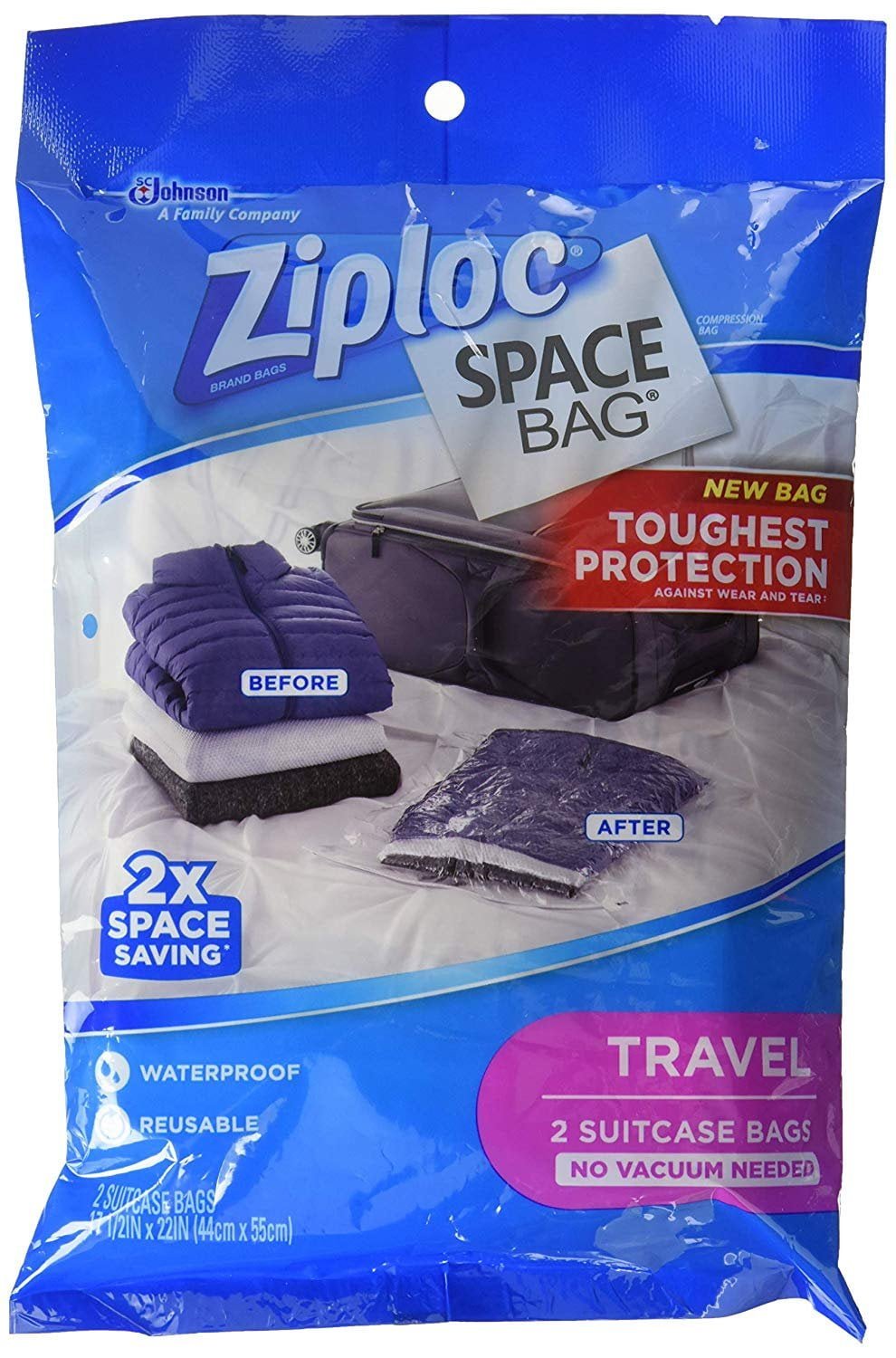
These bags are a fantastic fit for:
- Carry-On Travelers: If you’re trying to avoid checked baggage fees, these bags can help you fit more into a smaller suitcase.
- Overpackers: If you can’t resist bringing “just one more” outfit, these bags will help you make it work.
- Outdoor Adventurers: The waterproof and airtight design is great for camping or travel in wet climates.
- Budget Travelers: At under $10 for a pack of two, these bags are an affordable alternative to pricier packing cubes or vacuum systems.
They’re less ideal for travelers who prioritize wrinkle-free clothes or need a highly structured packing system. If you’re packing suits or dresses for a business trip, consider pairing these bags with a garment bag.
Tips for Getting the Most Out of Ziploc Travel Space Bags
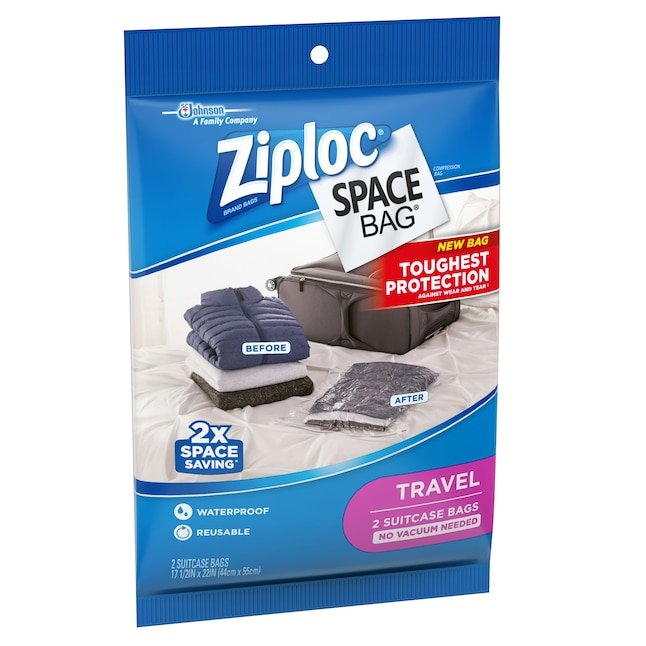
Based on my testing, here are some expert tips to maximize their effectiveness:
- Don’t Overstuff: Stick to the recommended capacity (three to four items per bag) to ensure proper compression and avoid straining the zipper.
- Roll Tightly: The more air you push out, the flatter the bag will be. Take your time to roll from the top down.
- Use for Bulky Items: Save these bags for sweaters, jackets, or fleece, where the space-saving benefits are most pronounced.
- Combine with Packing Cubes: Use cubes for structure and Ziploc bags for compression to create a hybrid system.
- Check the Seal: Double-check the zipper to ensure it’s fully closed before rolling, as even a small gap can let air back in.
- Store Carefully: When not in use, fold the bags flat and keep them away from sharp objects to prevent punctures.
Final Verdict: Are Ziploc Travel Space Bags Worth It?
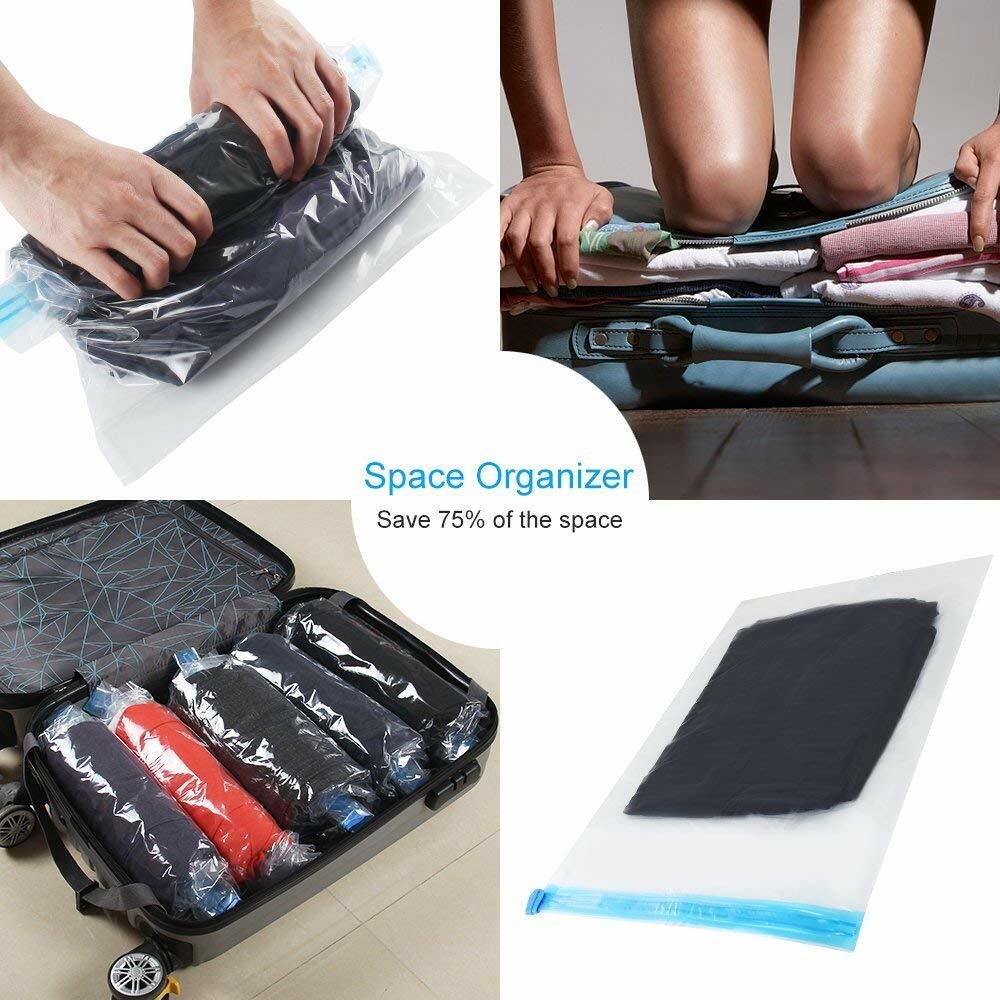
After putting Ziploc Travel Space Bags through their paces, I can confidently say they’re a solid addition to any traveler’s toolkit. They’re not perfect—the plastic isn’t as durable as I’d like, and they’re not ideal for wrinkle-prone fabrics—but their simplicity, affordability, and space-saving prowess make them a standout choice. For carry-on travelers, overpackers, or anyone looking to streamline their luggage without breaking the bank, these bags deliver. They’re particularly clutch for trips where you need to pack for multiple climates or want to keep your clothes protected from moisture and odors.
In a world of flashy travel gear, Ziploc Travel Space Bags prove that sometimes the simplest solutions are the most effective. If you’re ready to pack smarter, not harder, give these bags a try. They might just be the packing hack you didn’t know you needed.

